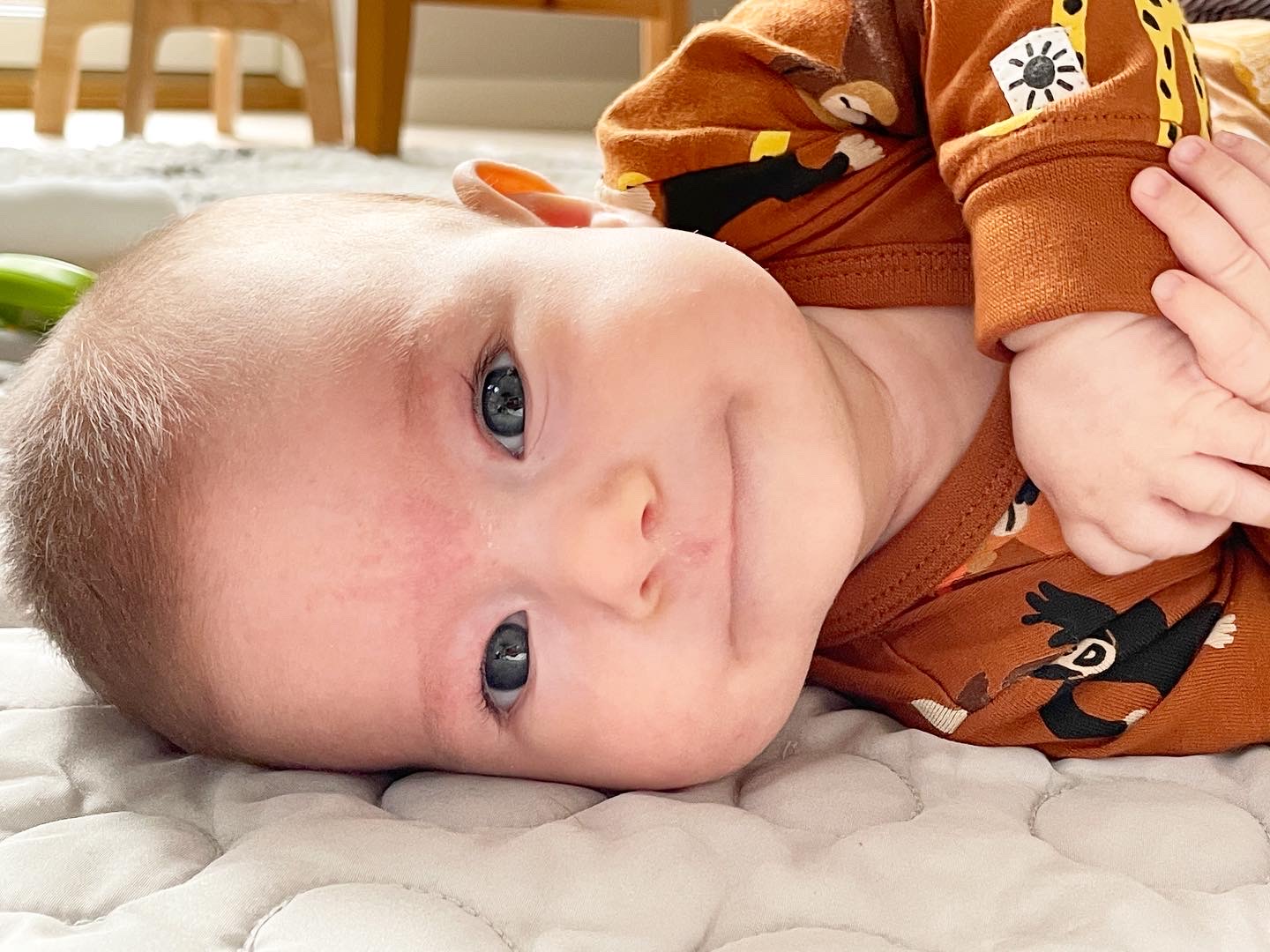Swaddling Your Baby: A Guide to Comfort and Safety
 By
Mellow Editorial Team
·
2 minute read
By
Mellow Editorial Team
·
2 minute read

The early days of parenthood are filled with both joy and uncertainty. One question that frequently pops up for new parents is: "Should I swaddle my baby?" Swaddling is the practice of wrapping a newborn snugly, and it has been a tradition for centuries. But is it truly beneficial and safe?
Benefits of Swaddling
1. Recreating Womb-like Comfort: Imagine a world of gentle pressure and closeness. That's the comforting environment a swaddle provides, replicating the feeling of security babies experienced in the womb. This can significantly reduce anxiety and promote a sense of calm, especially for newborns with a strong startle reflex that disrupts sleep.
2. Longer, More Restful Sleep: By minimizing involuntary movements caused by the startle reflex, swaddling can help babies sleep longer stretches. This translates to more sleep for your baby, and much-needed rest for sleep-deprived parents!
3. Reduced Risk of Self-Scratching: Newborns have surprisingly sharp nails, and swaddling can prevent them from unintentionally scratching their delicate skin. This not only protects your baby from potential irritation but also allows them to sleep more peacefully.
4. Promoting Safe Sleep Practices: Research suggests swaddling can be a helpful tool in reducing the risk of Sudden Infant Death Syndrome (SIDS) by promoting "back sleep." Since back sleep is a well-established preventative measure for SIDS, swaddling, when done safely, can contribute to a safer sleep environment for your baby. It's important to note that even swaddled babies remain responsive, so you can be assured they can still wake and signal their needs.
Safety Considerations for Swaddling
According to the American Academy of Pediatrics (AAP), when done correctly, swaddling can be an effective technique to help calm infants and promote sleep. Studies show that dangers only occur when swaddling is not done safely or when parents continue to swaddle after babies are rolling onto their bellies. Here are some safety measures to consider:
Hip Development: Swaddling too tightly around the hips can hinder healthy hip development. Ensure the swaddle allows for proper hip movement. The hips and legs should not be tightly constricted. You should be able to easily fit two to three fingers between the swaddle and your baby's thighs.
Prevent Overheating: Use a thin, breathable fabric to avoid overheating. Monitor your baby's temperature regularly. Signs of overheating include sweating, flushed cheeks, or overall discomfort.
Free Breathing: The swaddle should never be at risk for having their mouth or noses covered, allowing them to breathe freely at all times.
Snug but Breathable: The swaddle should be snug around the chest, but not restrictive. You should be able to comfortably slip a hand between the fabric and your baby's chest.
Back Sleep Only: Always place your swaddled baby on their back to sleep to reduce the risk of SIDS (Sudden Infant Death Syndrome).
Transitioning Out: Don't swaddle your baby forever. As they approach 4-6 months old and start showing signs of rolling over, it's time to transition out of swaddling to prevent suffocation risks.
👉🏻 Velcro or zip-up swaddles can make swaddling easier and ensure a secure, safe fit for your baby.
Sources
- American Academy of Pediatrics. (2016). SIDS and Other Sleep-Related Infant Deaths: Recommendations for a Safe Infant Sleeping Environment
- Healthy Children, American Academy of Pediatrics. (2022). Swaddling: Is it safe your your baby?
-
Van Sleuwen et al. (2007). Swaddling: A Systematic Review
- Manaseki-Holland et al. (2010). Effects of Traditional Swaddling on Development: A Randomized Controlled Trial
-
Lauren Vinopal. (2022). The Moro Reflex: Why your Sleep Baby Suddenly Freaks Out
-
Futagi, Y., Toribe, Y., & Suzuki, Y. (2012). The Grasp Reflex and Moro Reflex in Infants: Hierarchy of Primitive Reflex Responses
-
Canadian Paediatric Society. (2018). Swaddling.
-
Gerard, Harris, and Thach. (2002). Spontaneous Arousals in Supine Infants While Swaddled and Unswaddled During Rapid Eye Movement and Quiet Sleep
-
Brittany Clair. (2017.) It’s a Wrap: The Science on Swaddling


